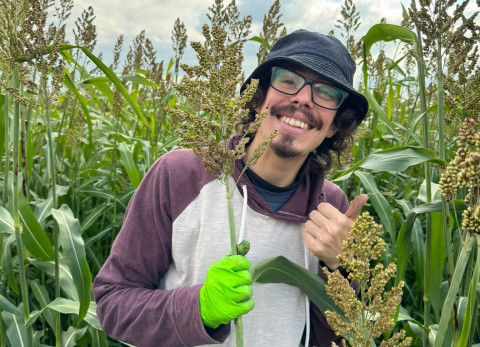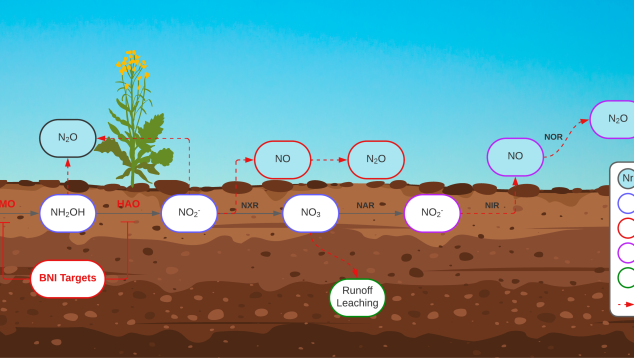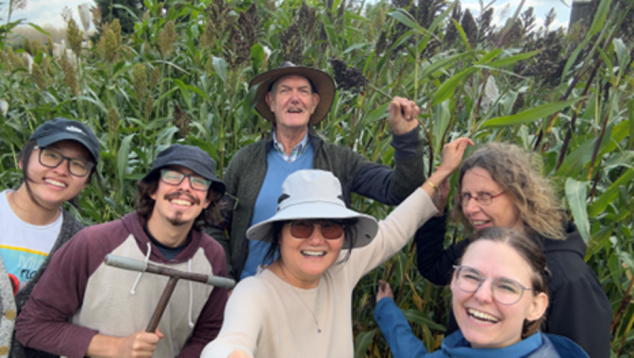Hi, my name is Gabriel, and I like to work with (almost) invisible things. Every day, as I walk into the lab at the Netherlands Institute of Ecology (NIOO-KNAW), I’m reminded of the very small things that, despite their size, have a very big impact on our lives. Like the tiny microbes in our soils that help cycle nutrients, the gas molecules that heat our planet, or the almost invisible compounds that plants release from their roots. I'm a PhD student working on the ClipsMicro project, and my focus is on a simple and sustainable idea: using the right plants, at the right time, to reduce greenhouse gas emissions from farmland.
You might not think of farming as a big polluter, but soils are hotspots for nitrous oxide (N₂O) emissions. This gas is over 250 times stronger than CO₂ when it comes to warming the planet. One of the main players? Nitrifiers, microbes that turn ammonium into nitrate through a process called nitrification. Nitrate can then be either turned into the nitrous oxide that will warm the environment, or carried to water bodies, leading to water pollution (see the image below). But let’s not think about the nitrifiers as bad guys, they are just performing their ecological tasks.
That’s where cover crops come in
Some plants can naturally slow down this microbial process. They do this by releasing substances through their roots that inhibit the nitrifiers. This ability is called Biological Nitrification Inhibition, or BNI. As part of my research, I’ve been screening a wide variety of cover crops, selected in close collaboration with farmers and stakeholders, to find out which ones are the best at doing this. Cover crops are important to protect and enrich the soil between main crop cycles, that way, BNI cover crops would provide even more benefits for the farmers.
In the lab, I grow these plants in special conditions to collect the substances released by their roots and prepare extracts from their tissues. Then I apply these to pure cultures of nitrifiers and watch what happens. Do they slow down? Do they stop? Do they impact other microbes that live in the soil? So far, some plants show really promising effects!
But testing in the lab is just the first step. With support from the Louis Bolk Institute, we’ve teamed up with Peter, a farmer who is just as excited as we are to find climate-friendly solutions. We’re setting up a field experiment on his farm, where we can test these cover crops in real agricultural conditions. We also have Walter on board, a passionate plant breeder who works with sorghum and really believes in the BNI potential of his plants. He shares sorghum seeds with us to test in the lab and welcomes us to his experimental fields, where we can take measurements directly from his plants. It’s been great to see how curious and open the farming community is about our work; it makes the science feel much more real and relevant.
So, what’s the end goal? To identify practical, plant-based strategies that help farmers reduce emissions and keep nutrients in the soil, where they belong. In the long term, we hope this research can contribute to more climate-resilient and sustainable agriculture.




